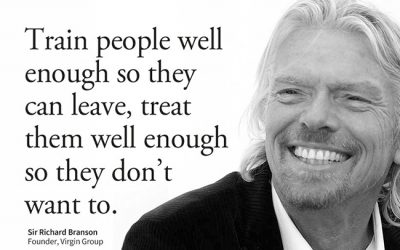In our most recent blog, we talked about how recruiting the best people for our team will help contribute to a safe and productive environment. So, once we have the best people in the right places on our team, how do we create the best atmosphere for growth?
In this blog, we consider some questions that will help us give the most to our team and get the most from our team as we work together to create a pro-growth environment.
Are we providing opportunities for individual growth?
Someone once said, if you’re the smartest person in the room, you’re probably in the wrong room. When building an environment for growth, we are more successful when we connect our team with people, resources and opportunities that will encourage them to grow. In practice, this often combines two steps:
- Providing real opportunities to lead in a way best suited for their gifts and talents
- Equipping your team with personal leadership development that will offer opportunities for them to become better versions of themselves
There will be times when we offer, provide and equip, yet some people do not respond in a way that brings them closer to where we — and they — need to be to thrive in their current position. Because of this, we also need to develop a transition plan for people who are either not in the best position or are just not the right fit for our team.
Each of these actions has a cost. Offering leadership opportunities means allowing people the latitude to make mistakes as they learn leadership in real time. That means offering real opportunities with real benefits and real consequences, for them and for us. These opportunities will help them learn leadership in real time. How they respond to those opportunities helps us, as leaders, better understand if they are or are not a good fit.
Are we focusing on what’s possible?
Consider NASA. When that organization makes a mistake, even if it’s not, strictly, their “fault”, that mistake is front page news. Beyond the publicity, the stakes, for them, are literally life and death. That’s why they hire only the best people. Yet, they hire those people knowing they’re human, that even the best and brightest occasionally miscalculate.
So, is NASA focused primarily on the possible mistakes, or are they focused on what will happen when they succeed? They are, literally, reaching for the stars. Primarily focused on the possible, with the right people in the right positions to get them there. How does NASA get everyone committed and on the same page? A commitment to innovation, accountability and collaboration at every level of the organization. Here’s that mission, in their own words:
“Our employees have incentives and sometimes even requirements to be open and collaborative… Tracking employees’ performance in this regard demonstrates our commitment to innovation, accountability, and collaboration at all levels throughout the Agency. Our leadership development training promotes a culture of openness and collaboration as well.”
This mindset is shared by everyone on the team, which creates a positive pressure that is integral to building an environment that encourages success. In talking about the Law of Environment, John Maxwell put it this way: “It’s healthy to be in over your head from time to time … That’s how we grow stronger.”
That doesn’t mean tossing your people to the sharks just to see if they will swim. Challenges strengthen us most when we’re working in our area of strength.
As a leader, when we get to know our people and we learn their strengths, we are better able to challenge them in ways that strengthen them, rather than do them harm. In this way, we make our entire team stronger.
In our next blog, we continue the theme of developing an environment for success by looking at ways for both the manager and employee to feel valued and understood.
Building a Leadership Culture
In previous blogs, especially here, here and here, we’ve talked about what a leadership culture looks like on a team. An active leadership culture is not only an environment in which leadership is embraced and trusted, it is an environment in which the...
4 questions to prepare you for your next big opportunity
In recounting stories of their success, people often say that one opportunity changed the trajectory of their life. We hear it all the time: on awards shows, after sporting events, during graduation speeches. Someone, at some point, was presented with an...
5 questions every employee wants their boss to ask
Recently, Forbes published a list of 10 Things Only Bad Bosses Say. While most of us have ‘bad boss experiences’ in the past, so we may relate, this article got me thinking about some of the things great leaders say to inspire and motivate their teams....
What Richard Branson looks for in a leader
Sometimes, as leaders, we feel pulled in two different directions, do we invest our time and energy in our employees or our customers? While it’s easy to say “both,” the reality is, we have limits on our time, so one or the other is going to get more of...
Creating an environment that encourages people to lead
In our most recent blogs, we looked at two different real-world customer service scenarios. In one story, both an employee and a manager fumbled a simple service opportunity that nearly cost them a long-time customer. In the next story, one employee chose...
A leader steps up and saves the deal
In our last blog, I shared a friend’s story of what he called “bewilderingly poor customer service,” that left him wondering why neither the employee nor the manager seemed to know how to fix the problem … or felt empowered to do so. Today’s story begins...








0 Comments